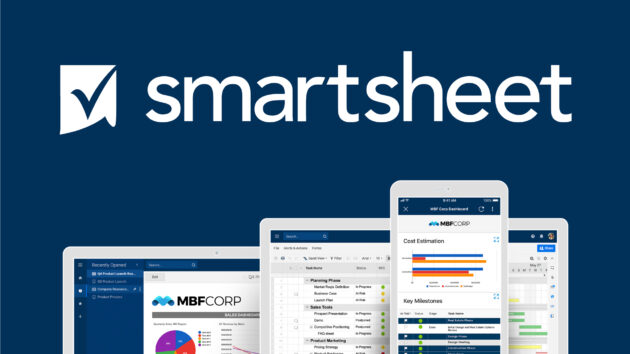Global Club Deals Intelligence Report
Q1 2025 (January – March 2025)
Executive Summary: The “Sovereign & Silicon” Pivot
Q1 2025 marked a definitive break from the “wait-and-see” paralysis of 2024. The data reveals a market defined by bifurcation: while the middle market remained cautious due to tariff volatility (specifically the US-Mexico/Canada trade friction), the top end of the market exploded with activity driven by two distinct forces: AI Infrastructure and Sovereign Directs.
We witnessed the resurrection of the “Jumbo Take-Private” (Walgreens, $23.7bn), but with a twist: these are no longer purely financial engineering plays. They are operational rescue missions funded by “Club” capital that now includes strategic heavyweights and Sovereign Wealth Funds (SWFs) acting as co-leads rather than passive LPs.
I. The Return of the “Mega-Consortium”
-
Trend: The $10bn+ Buyout is back, but the “Club” composition has changed.
-
Case Study: Walgreens Boots Alliance ($23.7bn) & Endeavor Group.
The Q1 data confirms that Private Equity has moved from “buying growth” to “buying broken giants.” The Sycamore-led consortium for Walgreens is the archetype of the 2025 vintage deal.
-
Strategic Insight: Solo sponsors can no longer digest the equity checks required for these massive enterprise values (EVs) given the higher cost of debt. The “Club” is the only viable mechanism for liquidity.
-
The Shift: Unlike the 2005-2007 era of “Bank-Led Clubs,” Q1 2025 deals are “Sponsor-Led Clubs” where families (e.g., Pessina family in Walgreens) and SWFs roll equity to bridge the valuation gap. This reduces the cash-at-close requirement and aligns long-term incentives for painful restructurings.
II. AI as an Asset Class: The “Compute Capital” Loop
-
Trend: Venture Capital, Infrastructure, and Private Equity have merged into a single vertical for AI.
-
Case Study: OpenAI ($40bn), Anthropic ($4.5bn), Brookfield Infra Sale.
The distinction between “Venture Capital” and “Infrastructure” has collapsed. The Q1 data shows that the largest “VC” rounds (OpenAI, Anthropic) were actually capital expenditure (CAPEX) syndicates.
-
Strategic Insight: Investors are no longer just buying equity; they are funding the physical build-out of data centers and GPU clusters.
-
The “Round-Trip” Economy: Note the participation of Amazon and Google in the Anthropic deal. This is a closed-loop system where the invested capital is immediately recycled back to the investor as cloud revenue. For the “Club” of financial investors (Thrive, SoftBank), the bet is now on the utility layer of AI (compute) rather than the application layer.
III. Sovereign Alpha: From LP to “Lead”
-
Trend: Middle Eastern SWFs are bypassing GPs to lead direct strategic acquisitions.
-
Case Study: PIF acquires Niantic, Velocity Capital / Sports Agencies.
Q1 2025 solidified the “Sovereign Direct” model. The Public Investment Fund’s (PIF) acquisition of Niantic is a geopolitical signal.
-
Strategic Insight: SWFs are moving from “Passive Capital” to “Strategic Aggregators.” By buying Niantic directly, PIF isn’t looking for a 5-year IRR; they are buying a pillar for their “Vision 2030” gaming ecosystem.
-
Club Implication: For Western PE firms, SWFs are becoming competitors for prime assets rather than just sources of funds. We expect Q2 to see more “Hybrid Clubs” where a Western GP provides the management expertise, but an SWF provides the majority control capital.
IV. Geopolitics as the Dealbreaker (and Maker)
-
Trend: Supply chains are dictating M&A flow; Tariffs are the new “Material Adverse Change” (MAC).
-
Case Study: US Tariffs (Canada/Mexico), European Defence Boom.
The Q1 data shows a stark divergence based on geography.
-
North America: The March announcement of 25% tariffs on neighbors caused an immediate “freeze” in cross-border industrial deals. Dealmakers are pausing to re-underwrite margins.
-
Europe: Conversely, the “Defence” sector is booming. The data on European defense roll-ups highlights that “National Security” is now a investable ESG theme. PE clubs are consolidating fragmented supply chains (ammo, drones) to meet NATO rearmament targets.
Regional “Club” Dynamics
| Region | Dominant Deal Type | Key Strategic Driver |
| North America | Take-Privates | Valuation Arbitrage: Public markets are punishing transition stories (Retail, Legacy Tech), allowing PE clubs to buy assets at deep discounts (e.g., Walgreens). |
| Europe | Industrial / Defence | Security & Health: Focus on “Strategic Autonomy” (Defence) and “Preventative Health” (Neko Health) as demographic plays. |
| Asia (India) | Exits (IPOs) | Liquidity: India is the global “Exit Valve.” While Western exits are frozen, Global PE clubs are using Mumbai’s hot IPO market to return cash to LPs. |
| Asia (China) | Hard Tech | Automation: Capital is fleeing consumer internet for “Industrial Automation” (Neolix, Univista) to solve the demographic labor shortage. |
Outlook for Q2 2025: What to Watch
-
The “Continuation Club” Wave: With global exit values still muted ($78bn in Q1), expect a massive surge in GP-led secondaries in Q2. Sponsors will move their “trophy assets” into continuation funds, bringing in a club of secondary buyers to generate artificial liquidity for LPs.
-
Regulatory “Brake Checks”: The DOJ’s challenge to the HPE/Juniper deal in Q1 is a warning. Q2 club deals will require larger “reverse breakup fees” and longer closing timelines to account for antitrust friction.
-
The “Rate Cut” Release: With Eurozone inflation falling to 2.2%, an ECB rate cut in Q2 is likely. This could make Europe the most attractive region for LBOs in H2 2025, potentially unlocking the stalled pipeline of German industrial assets.






